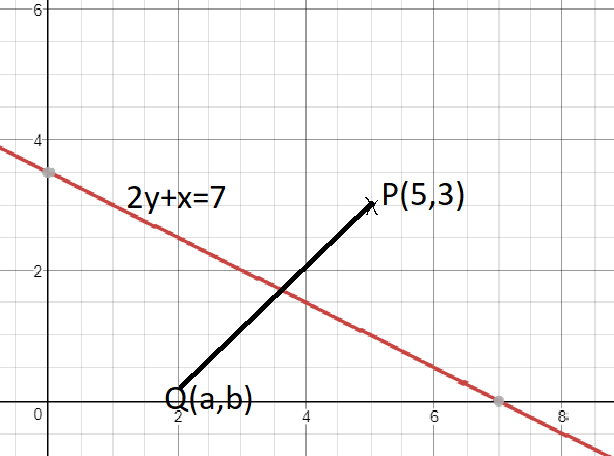A line segment is bisected by a line with the equation # 2 y + x = 7 #. If one end of the line segment is at #( 5 , 3 )#, where is the other end?
1 Answer
Explanation:
First off, even if it is crude, draw a sketch.

If the bisectors are perpendicular, then the products of their gradients will be
Let
I will be using
Let
Now, we are searching for the equation of a line given a gradient and a point. This will allow us to easily find points on the bisector. We will use:
Going back to our sketch, there is a point that these two lines cross. We can find this point by solving simultaneously for B and L
Subst B into L
Let
We can now use column vectors to get us to Q. Since the part of the segment either side of the line bisecting it is equal, we know that the vector
There is quite probably a simpler way to do this, but I don't know of any. Please tell me if I need to clarify anything
